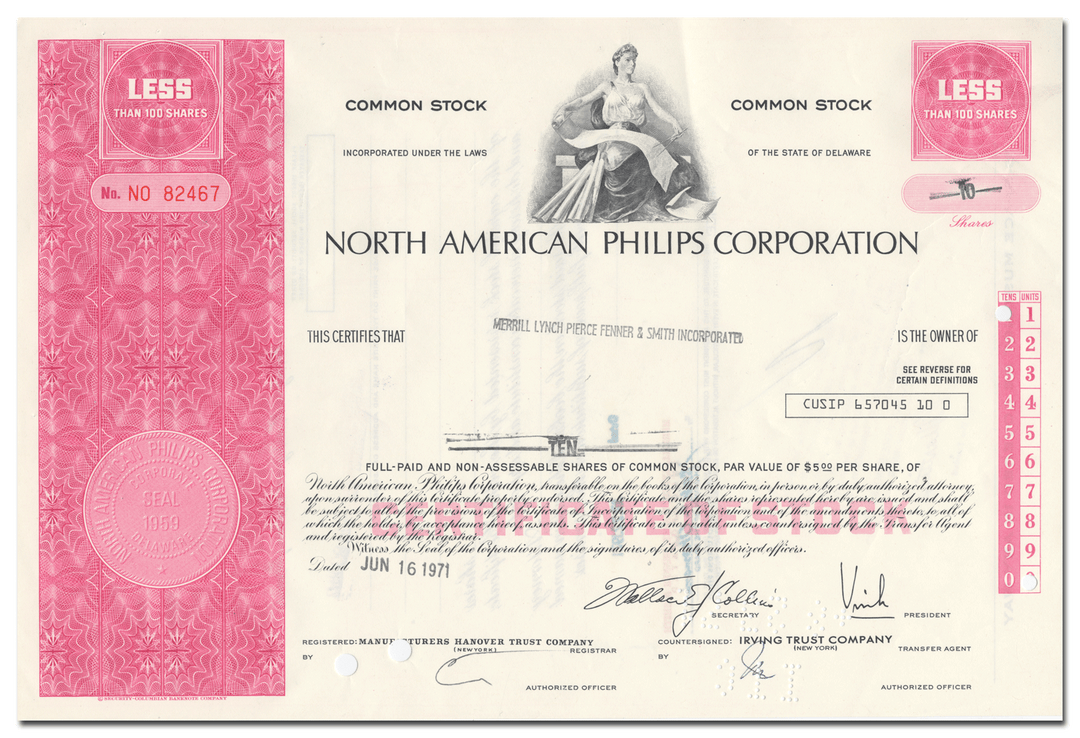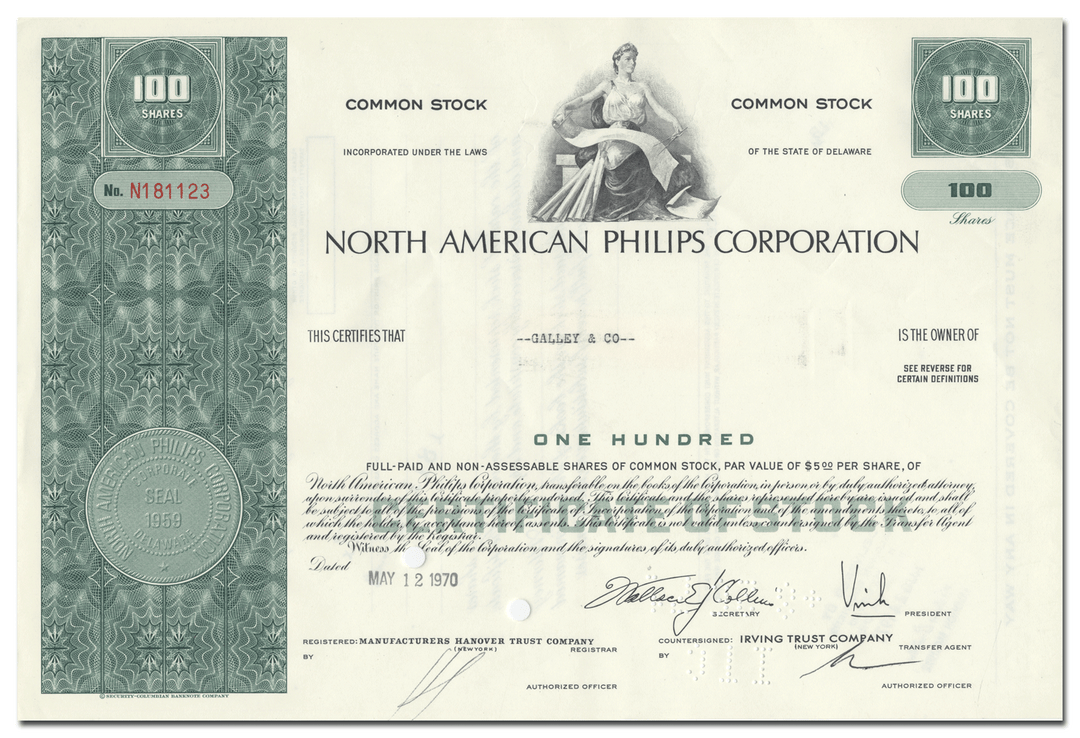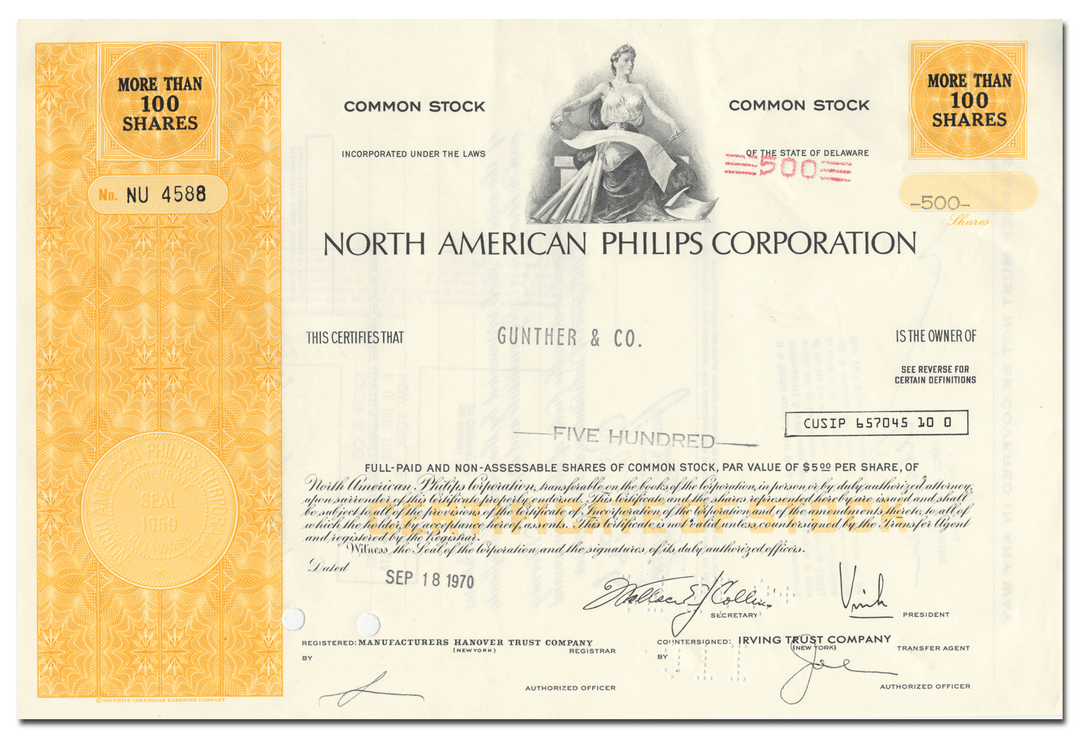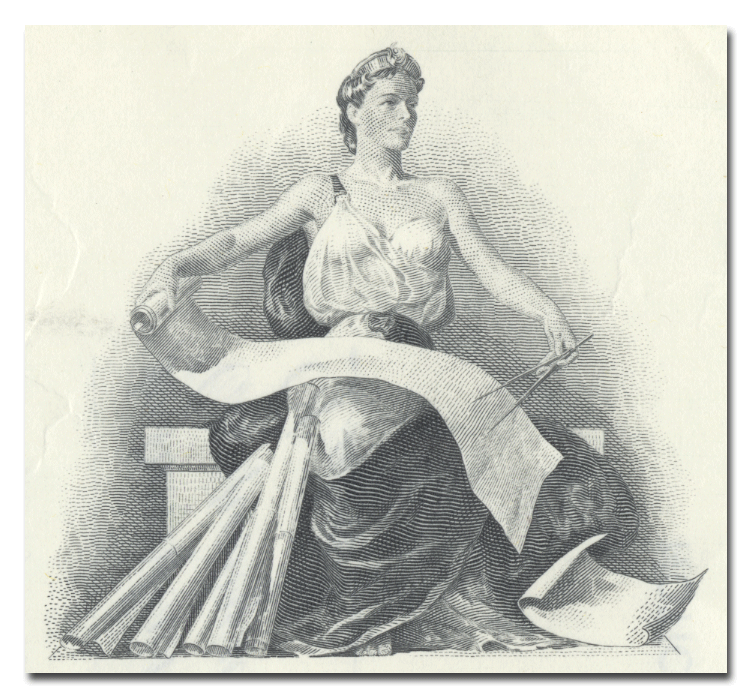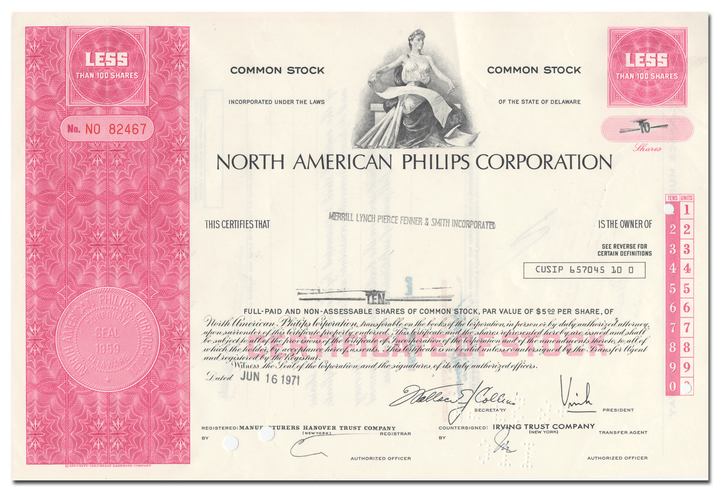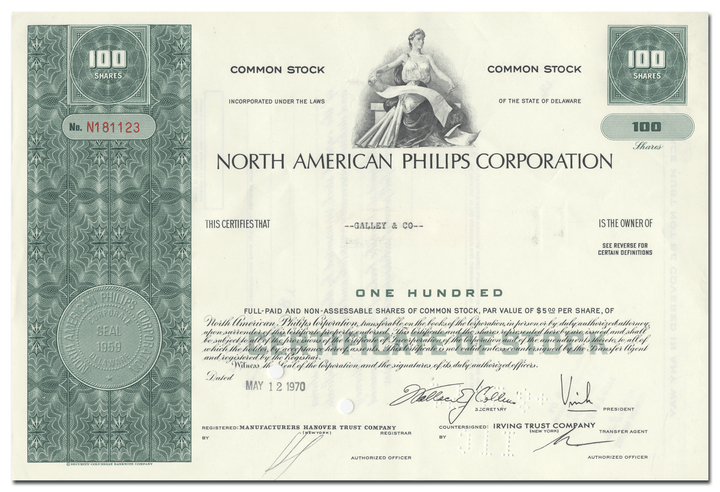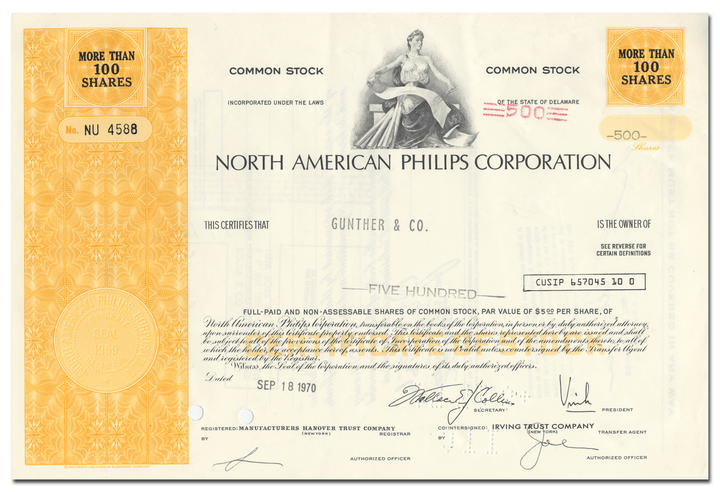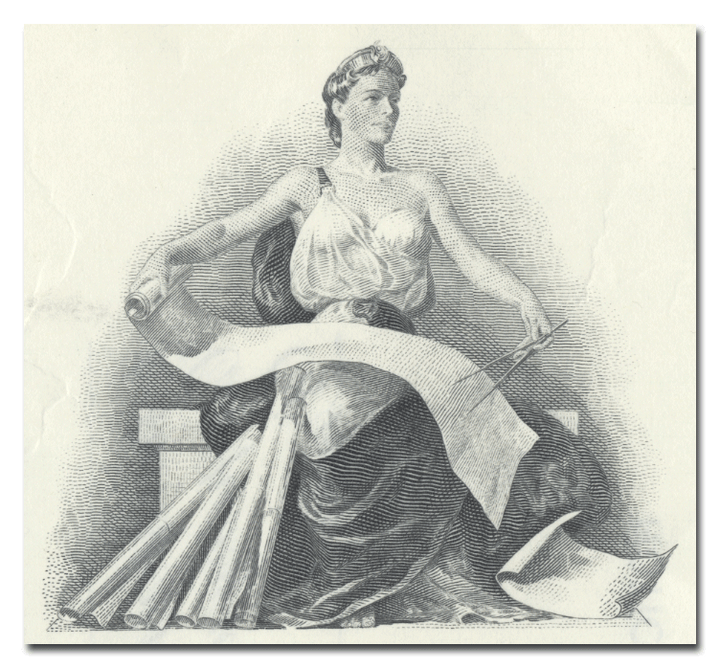North American Philips Corporation
- Guaranteed authentic document
- Orders over $75 ship FREE to U. S. addresses
Product Details
| Company | North American Philips Corporation |
| Certificate Type | Common Stock |
| Date Issued | 1970's |
| Canceled | Yes |
| Printer | Security-Columbian Bank Note Company |
| Signatures | Machine printed |
| Approximate Size |
12" (w) by 8 1/2" (h) |
|
Product Images |
Representative of the piece you will receive |
| Authentic | Yes |
| Additional Details | NA |
Historical Context
Magnavox's Odyssey 2 was a popular video game console, sold in the United States from 1978 and 1983. It never was quite as popular as the Atari 2600 or Mattel's Intellivision, but it did sell more units than the GCE Vectrex, Bally Astrocade, Emerson Arcadia 2001, Fairchild Channel F or the RCA System II. Odyssey 2 was even more popular in Europe, where it was marketed by Magnavox's parent company, Philips Electronics.
Around 1983, the video game market began to contract, which ended in the infamous video game 'crash' of 1984. In this time period the Odyssey 2 totally lost its remaining market share to the next generation 8 bit video games like the Colecovision, Atari 5200, and the 8 bit Nintendo Entertainment System. In order to compete, North American Philips/Magnavox developed their own next generation 8 bit system, code named the Odyssey 3. Later press releases revealed that it would be termed the Command Center.
The Odyssey 3 Command Center was to have 16k ROM, 16k RAM, and a capacity for detailed background and foreground graphics. The keyboard was redesigned to have more keys, and a real computer keyboard was added in place of the Odyssey 2's flat plastic membrane. There was a built in joystick holder, so that one person could use both joysticks at once, for arcade style games. The unit also had two planned accessories: A voice synthesizer and a 300 baud modem. The Odyssey 3 Command Center was hyped to the press, and previewed at the 1983 Consumer Electronics show. It never was released.
For years, American classic video game collectors searched for prototypes of this unit. In time, the Odyssey 3 became known as vaporware. It became a 'holy grail' of classic game collecting among those video game collectors who knew that a few prototypes really existed.
Later, it was determined that Philips had indeed releaed the unit, but only sold them for a limited time in 1983, with only 16 cartridges ever being made for it! It was sold only in Europe, and was dubbed the Philips Videopac + G7400. The Videopac + console had almost exactly the same internal hardware as the American Odyssey 3 prototype, but externally it was very different. The keyboard did indeed have extra keys, but a flat plastic membrane keyboard was used instead of a real keys to save costs. Also, there was no built in joystick holder.
The Philips Videopac + G7400 could play four types of cartridges:
- All the standard Odyssey 2 / Philips G7000 cartridges. The backward compatibility would ensure that many Odyssey owners would upgrade to this system and still be able to use all their old games.
- A series of remakes, in which popular Odyssey 2 / Philips G7000 games were re-released with high resolution, beautifully rendered background graphics, similar in quality to what one would see on a Colecovision. If these game were played on a regular Odyssey 2 / Philips G7000 the game would play just like the classic version, but the high-res background graphics would not be visible.
- A series of totally new Odyssey games. These had standard Odyssey foreground graphics but also had high resolution background graphics. If these game were played on a regular Odyssey 2 / Philips G7000 the game would play correctly, but the high-res background graphics would not be visible.
- A series of totally new Odyssey 3 / Philips G7400 only games that could only be played on the Odyssey 3 or G7400. These games not only had hi-res background graphics, but they had hi-res foreground graphics, scrolling screens, multiple screens and the ability for more complex gameplay. Only four such games were ever made: Norseman, Helicopter Rescue, Trans-American Ralley and the Home Computer Module.
Phillips/Magnavox didn't get into the video game business again until the release of the CD-I in 1992. Marketed as a multimedia entertainment device (with games, interactive movies and the like), the system didn't seem to do anything particularly well (game consoles had better games, computers had better reference and educational titles, etc.) and never gained a foothold in the market. By the time it was discontinued, CD-I had lost millions of dollars.
Related Collections
Additional Information
Certificates carry no value on any of today's financial indexes and no transfer of ownership is implied. All items offered are collectible in nature only. So, you can frame them, but you can't cash them in!
All of our pieces are original - we do not sell reproductions. If you ever find out that one of our pieces is not authentic, you may return it for a full refund of the purchase price and any associated shipping charges.






